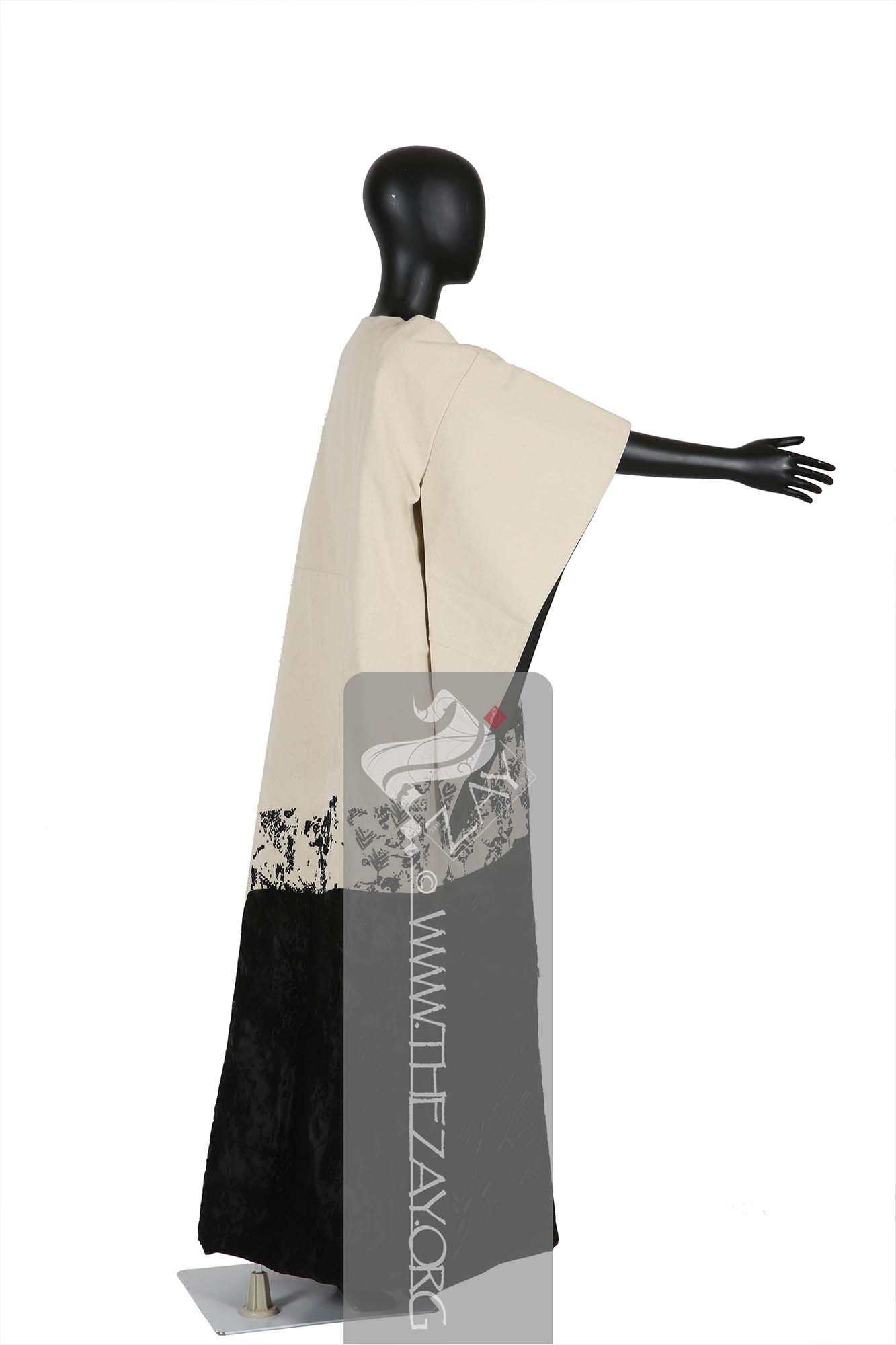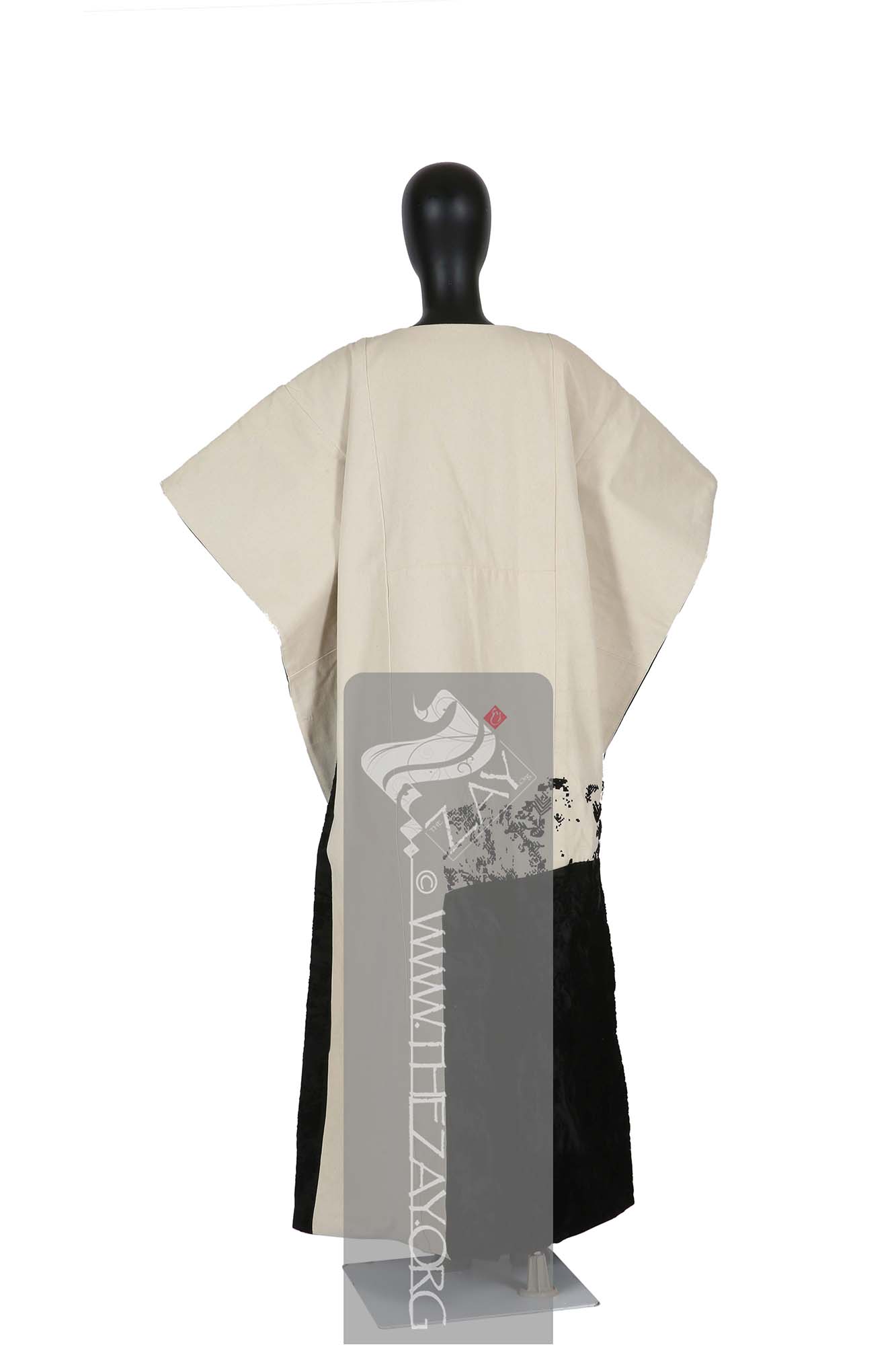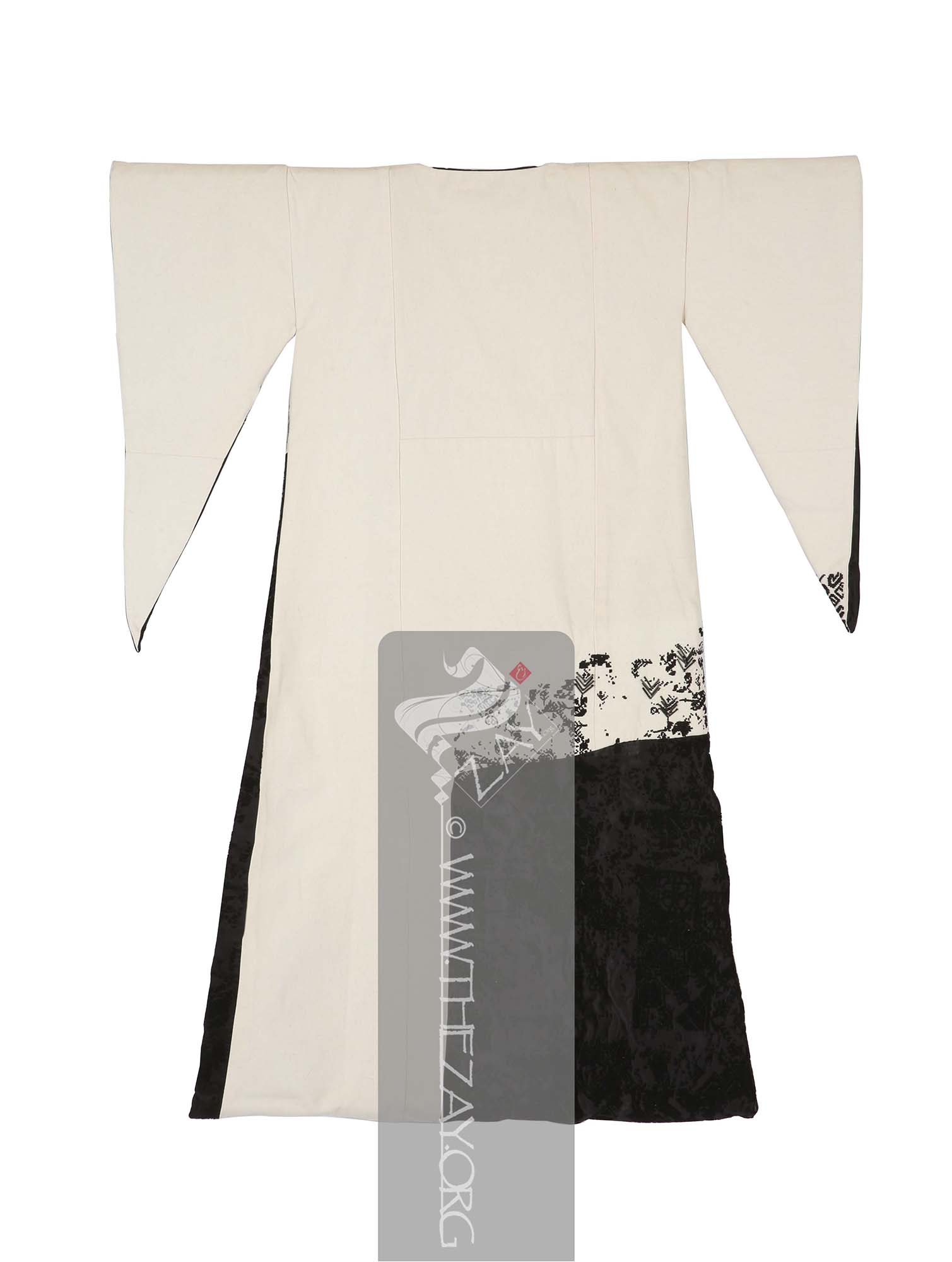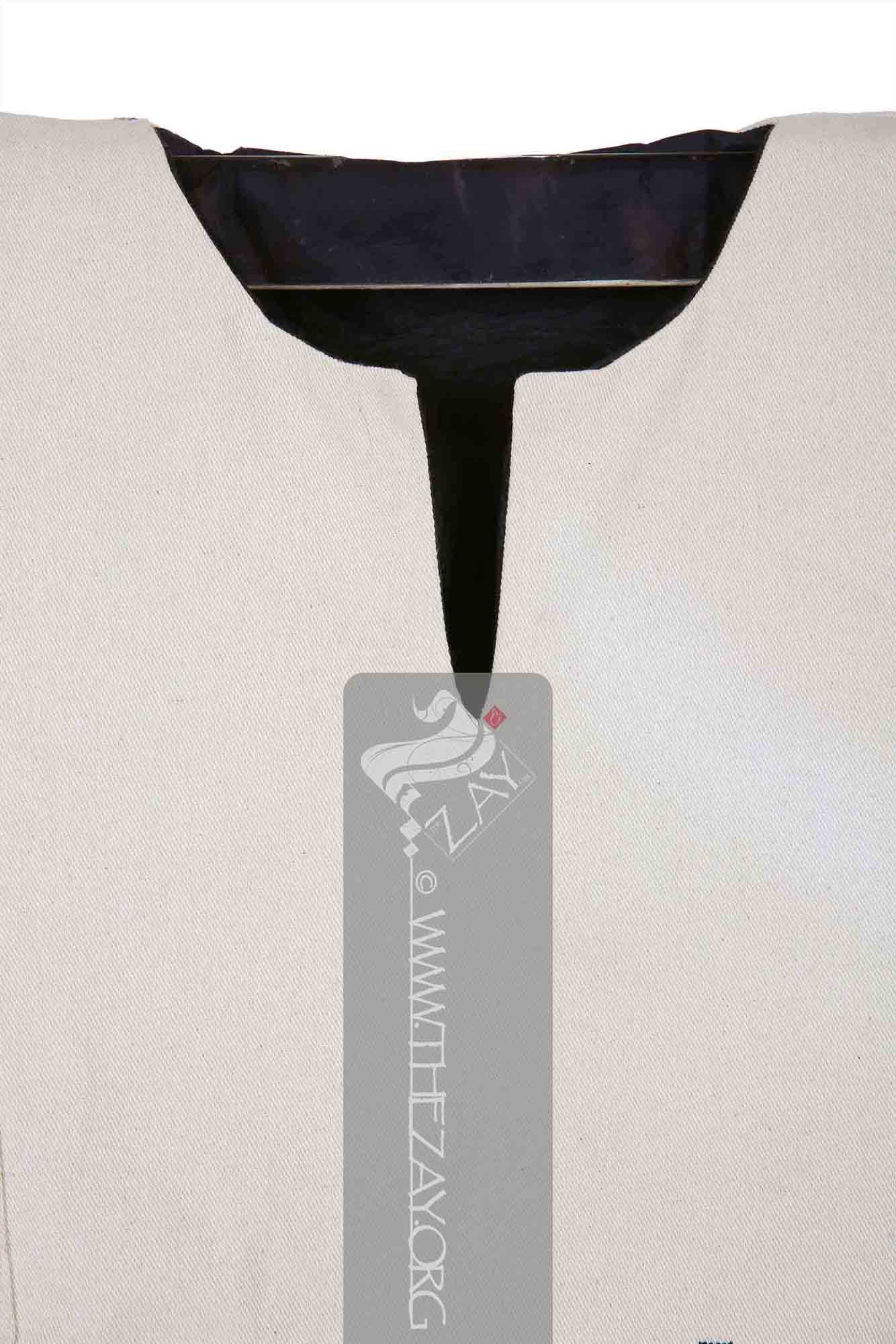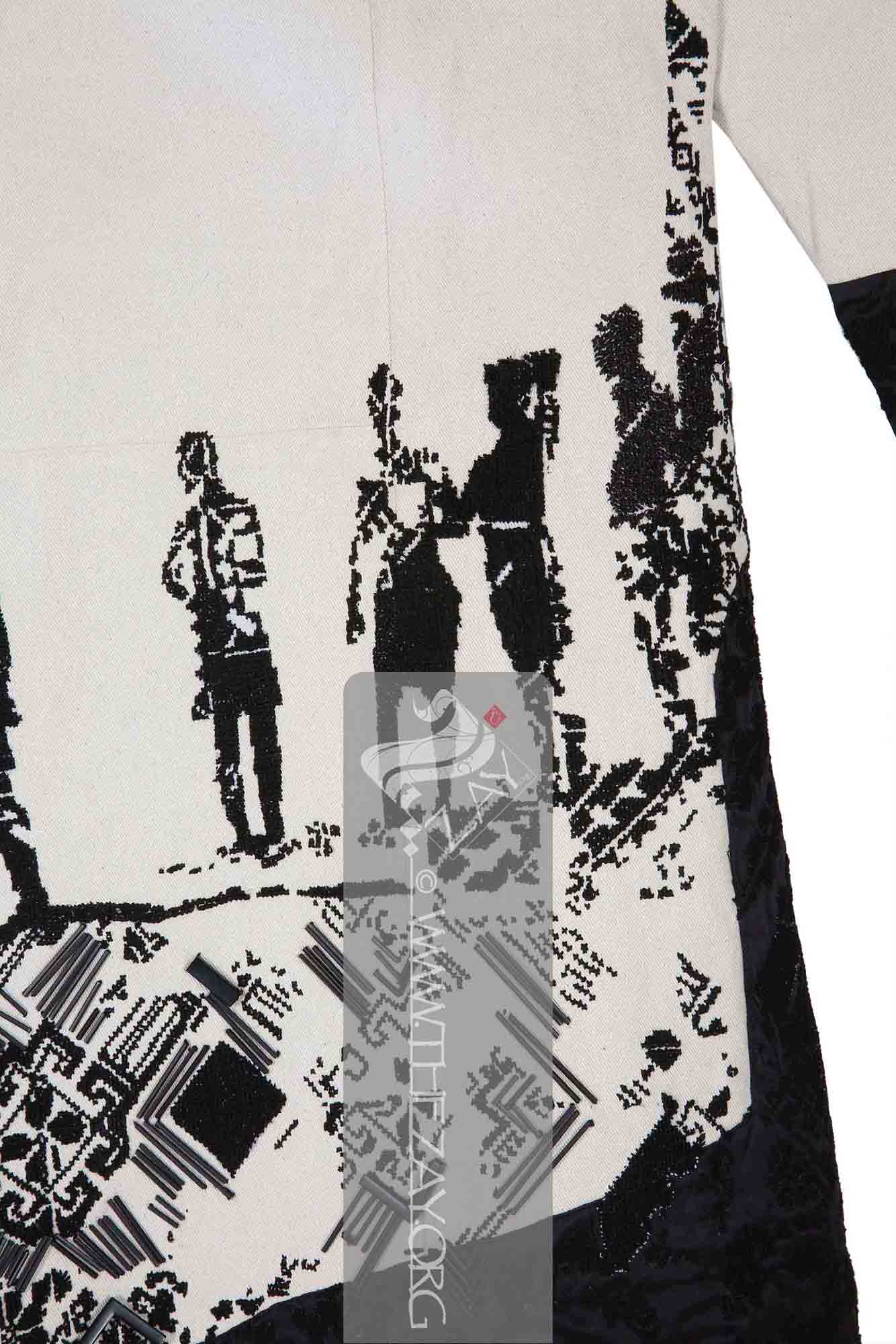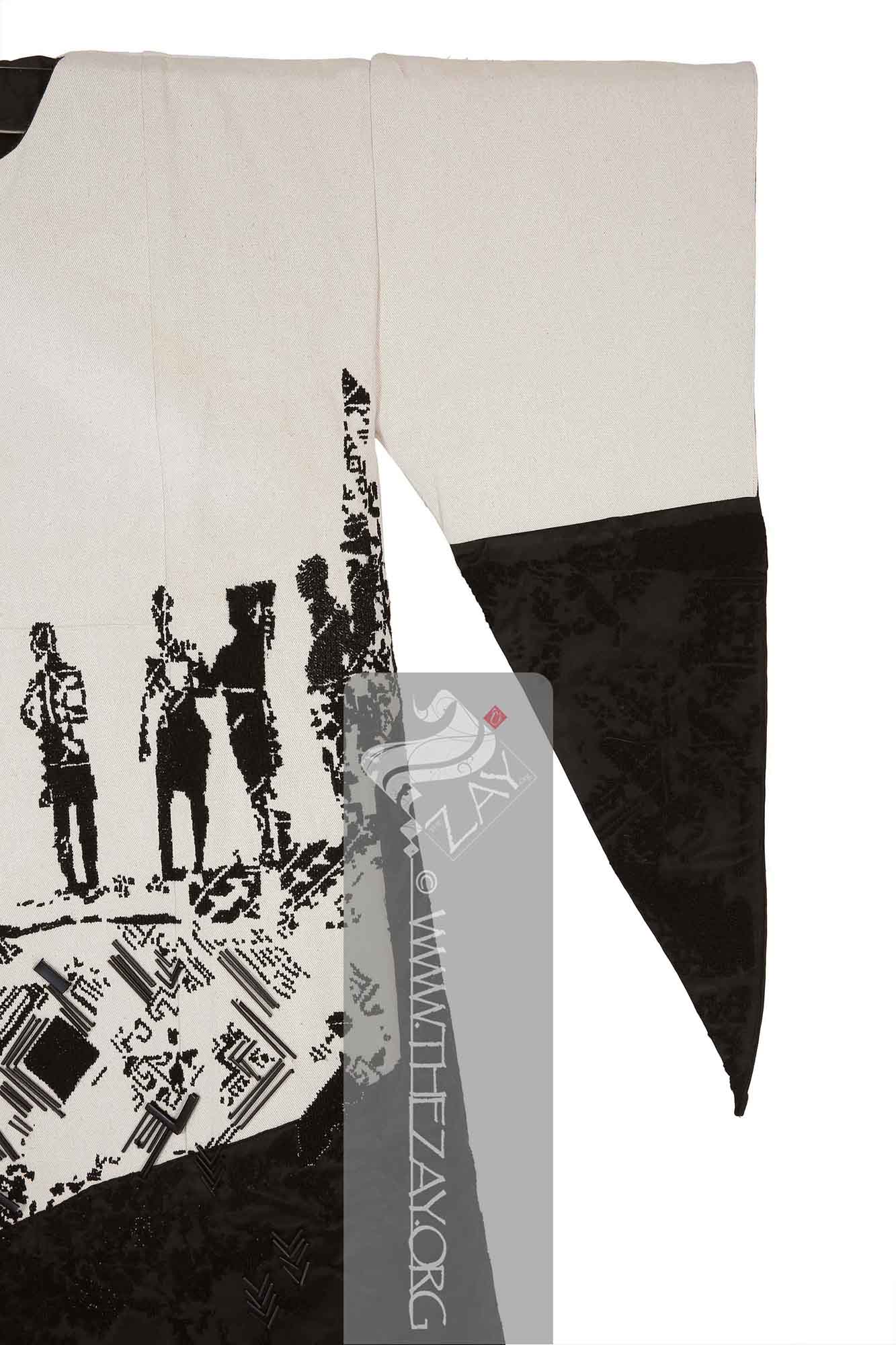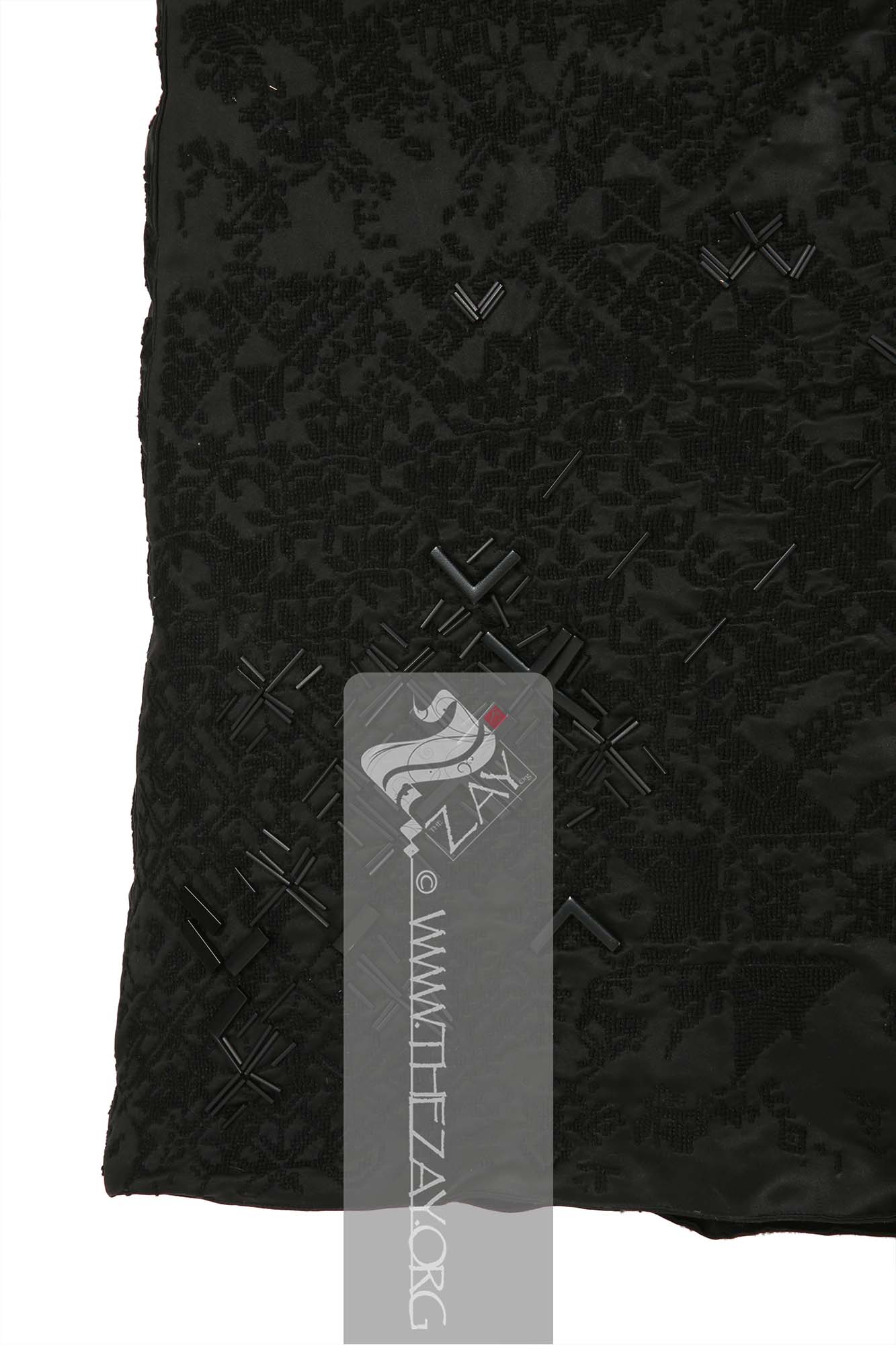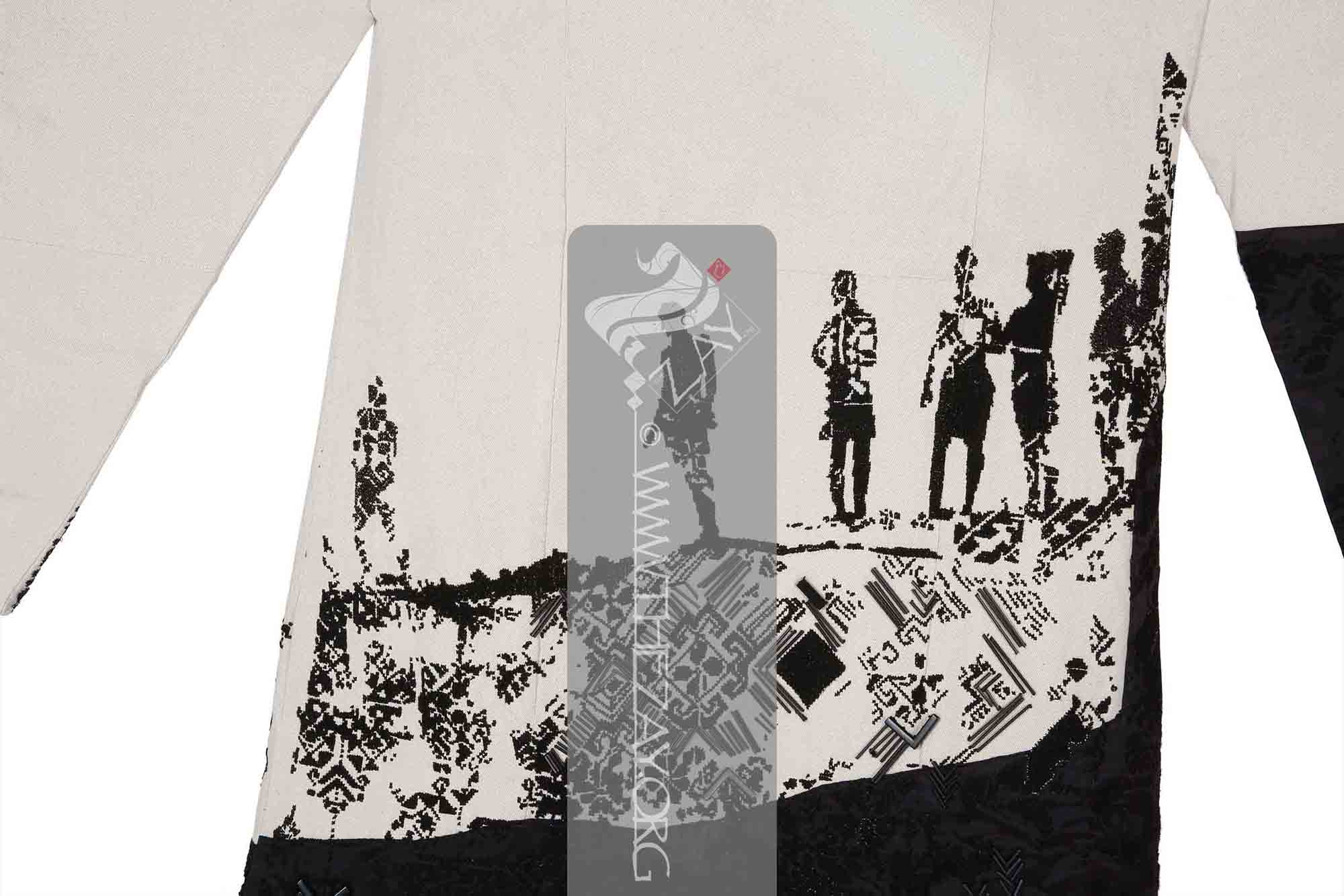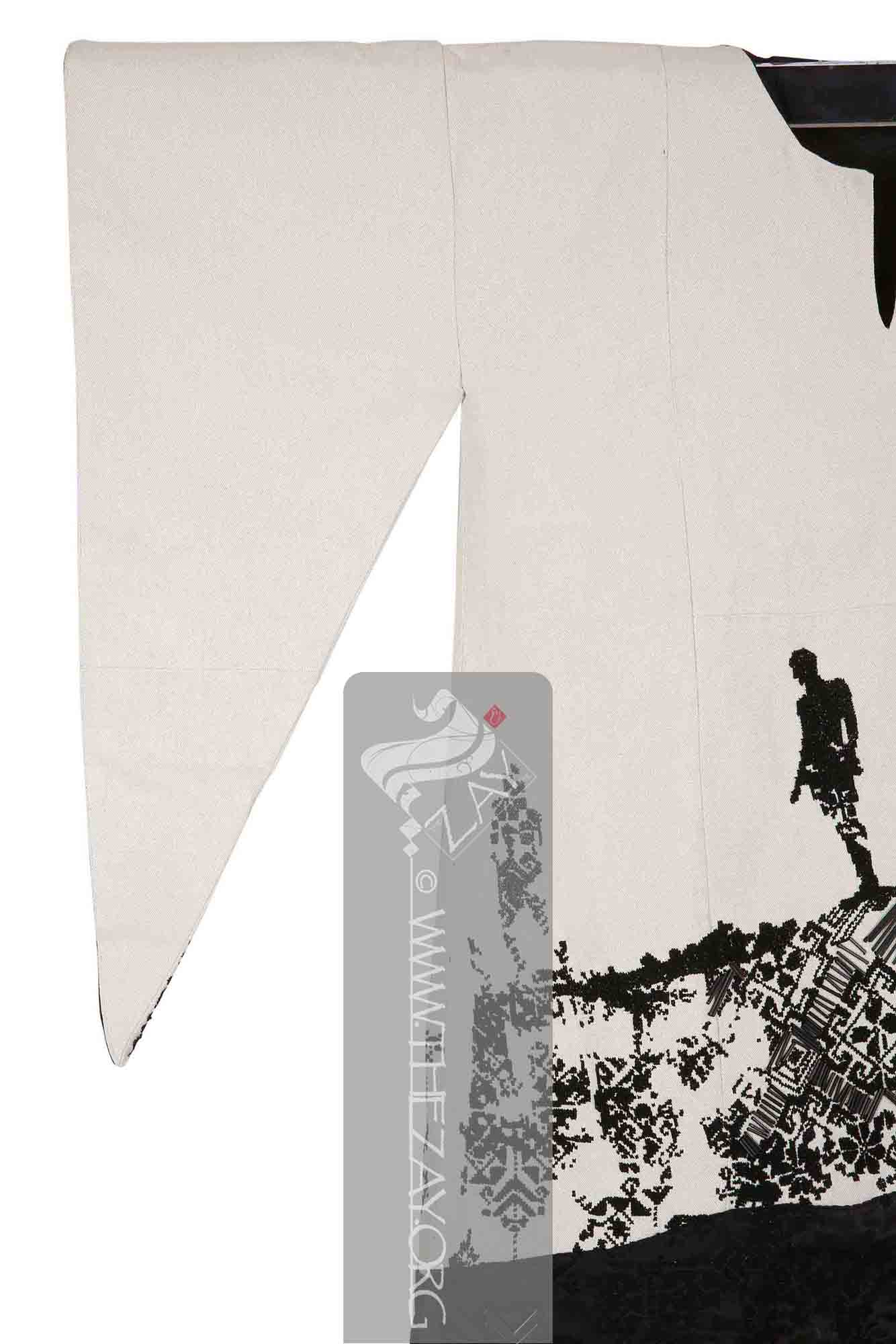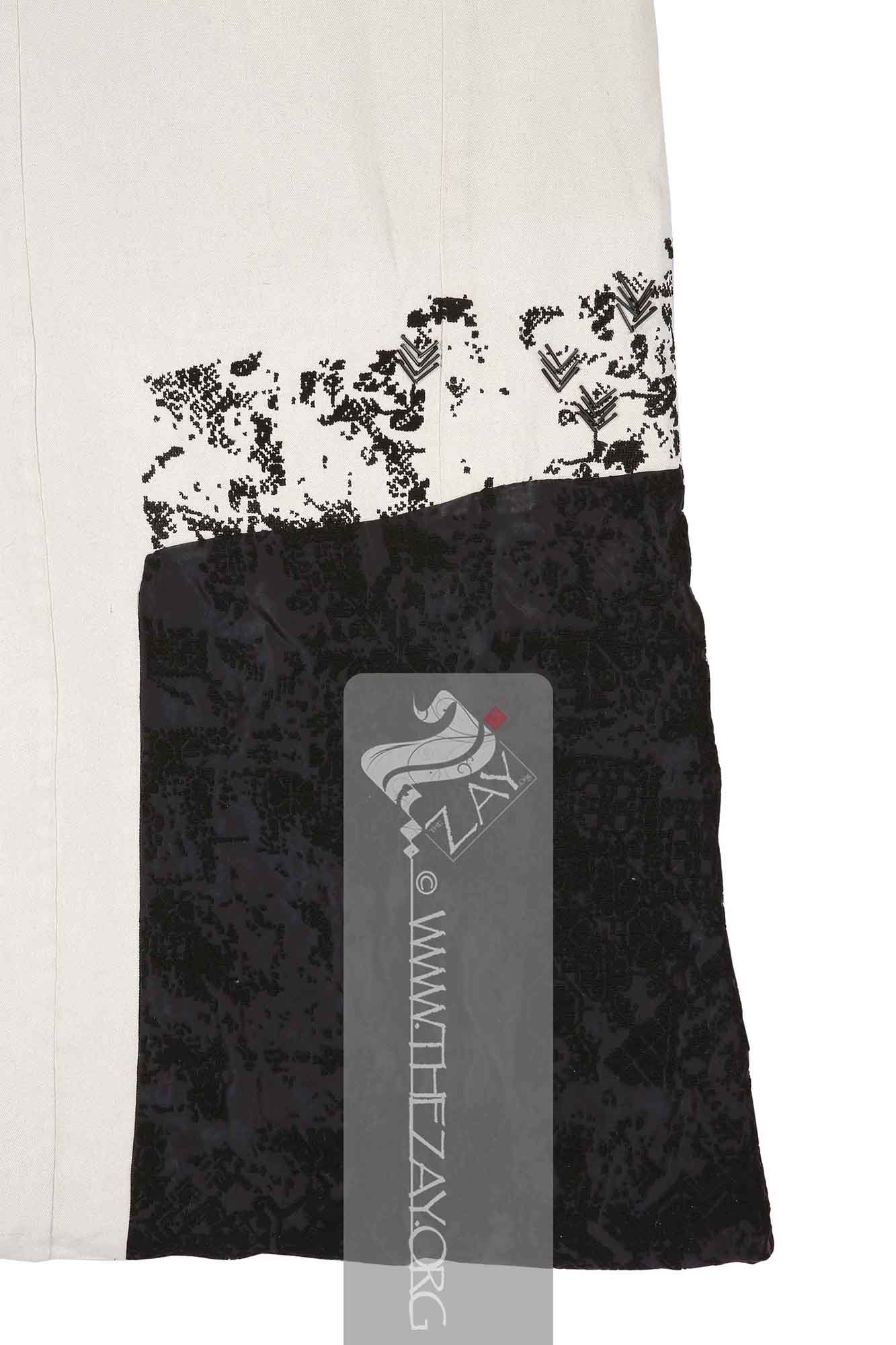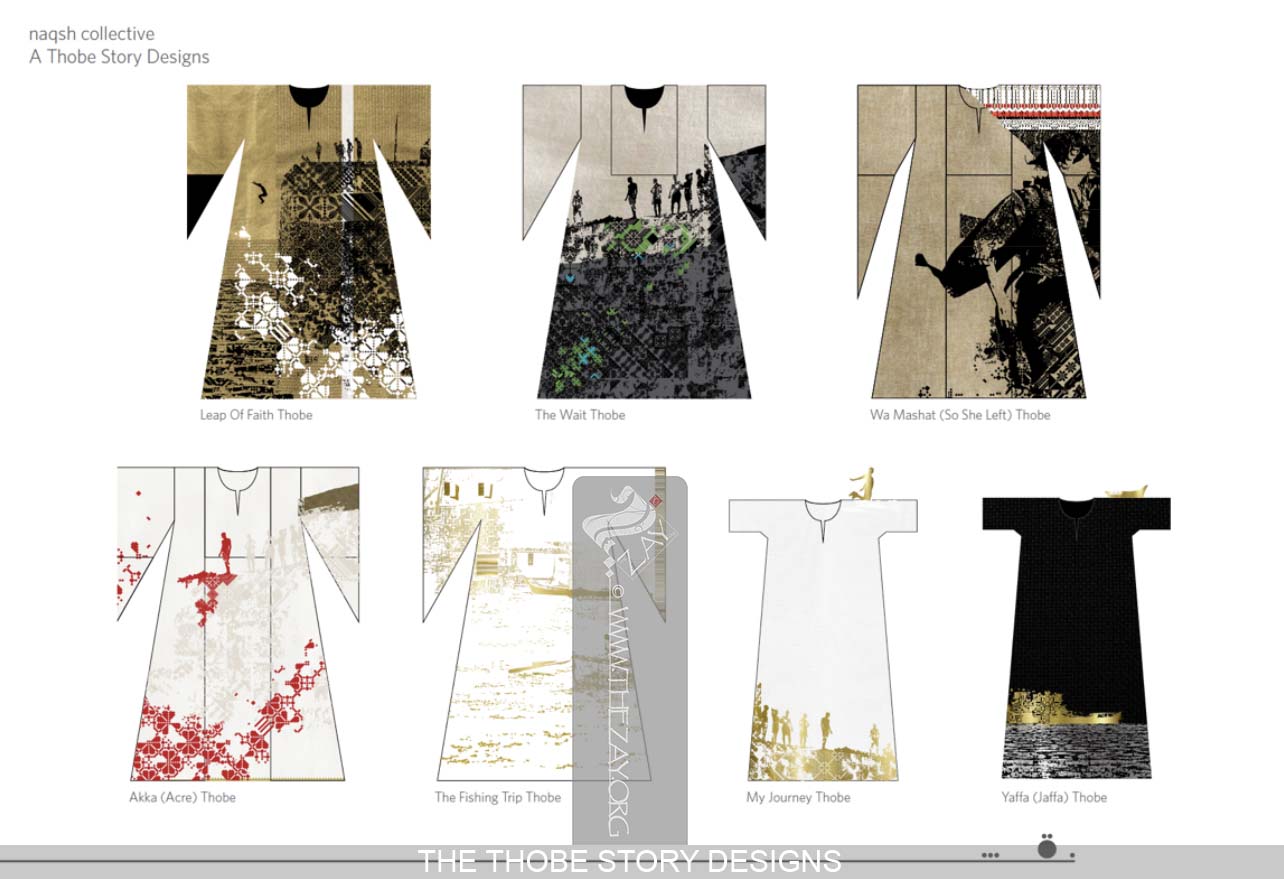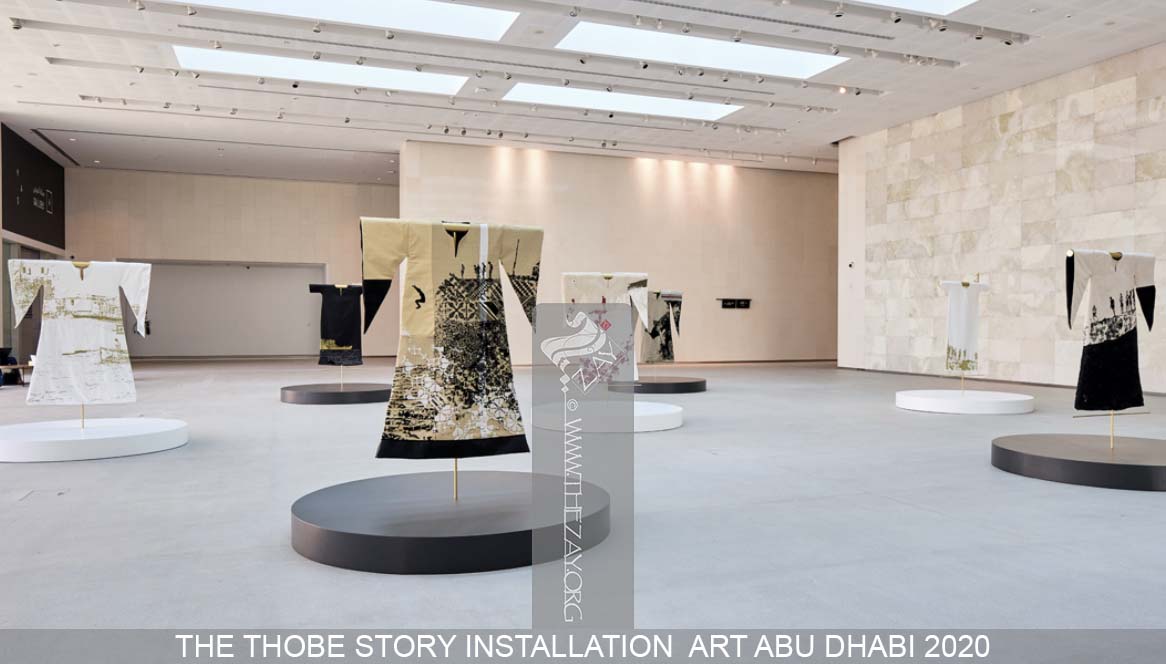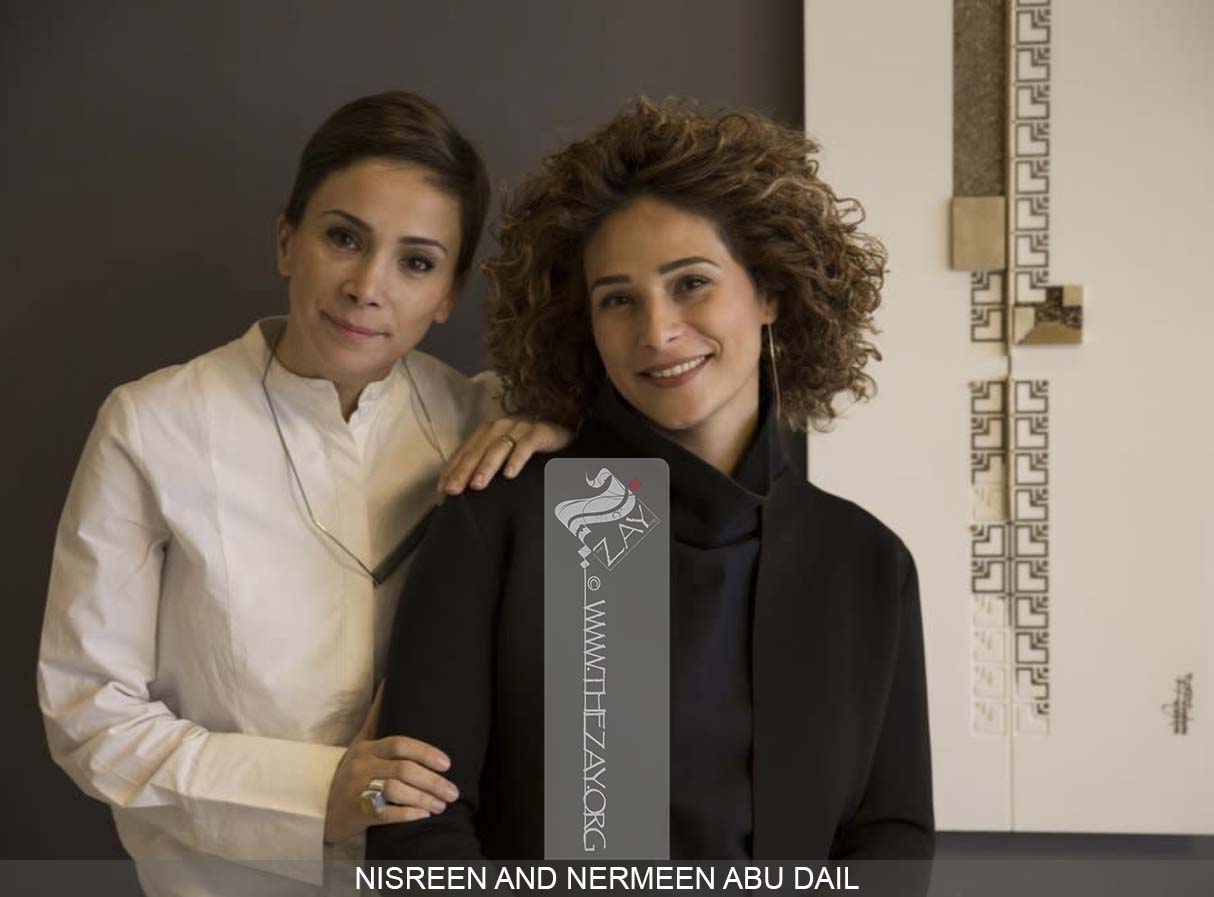Object NoteThis is part of “A
Thobe
Thobe: (Arabic: thawb, Pl. Athwāb/thībān), can be pronounced thawb or tobe
Tobe: (Arabic: thawb, Pl. Athwāb/thībān), can be pronounced thawb or thobe based on locale. The standard Arabic word for ‘fabric’ or ‘garment’. It can refer to a qamīs-like tunic worn by men and women in the Arabian Peninsula, Iraq, the southern and south-western ports and islands of Iran, and some countries in East and West Africa. More specifically, it can refer to the square-shaped Bedouin overgarment worn by women. based on locale. The standard Arabic word for ‘fabric’ or ‘garment’. It can also refer to a qamīs-like tunic worn by men and women in the Arabian Peninsula, Iraq, the southern and south-western ports and islands of Iran, and some countries in East and West Africa. More specifically, it can refer to the square-shaped Bedouin overgarment worn by women. Story” Project by the Naqsh Collective in collaboration with 81 Designs.
Read more about their art, this project, and this dress on our
blog.
Object History After carving modern interpretations of traditional Palestinian embroidery into untraditional mediums,
the Naqsh Collective founded by two sisters; Nisreen, Nermeen Abu Dail, it had them re-translating the art produced in their earlier projects into the soft material of textiles, fashioning them into thobes (also spelt
thawb
Thawb: (Arabic: thawb, Pl. Athwāb/thībān), can be pronounced thobe
Thobe: (Arabic: thawb, Pl. Athwāb/thībān), can be pronounced thawb or tobe
Tobe: (Arabic: thawb, Pl. Athwāb/thībān), can be pronounced thawb or thobe based on locale. The standard Arabic word for ‘fabric’ or ‘garment’. It can refer to a qamīs-like tunic worn by men and women in the Arabian Peninsula, Iraq, the southern and south-western ports and islands of Iran, and some countries in East and West Africa. More specifically, it can refer to the square-shaped Bedouin overgarment worn by women. based on locale. The standard Arabic word for ‘fabric’ or ‘garment’. It can also refer to a qamīs-like tunic worn by men and women in the Arabian Peninsula, Iraq, the southern and south-western ports and islands of Iran, and some countries in East and West Africa. More specifically, it can refer to the square-shaped Bedouin overgarment worn by women. or tobe
Tobe: (Arabic: thawb, Pl. Athwāb/thībān), can be pronounced thawb or thobe based on locale. The standard Arabic word for ‘fabric’ or ‘garment’. It can refer to a qamīs-like tunic worn by men and women in the Arabian Peninsula, Iraq, the southern and south-western ports and islands of Iran, and some countries in East and West Africa. More specifically, it can refer to the square-shaped Bedouin overgarment worn by women. based on locale. The standard Arabic word for ‘fabric’ or ‘garment’. It can also refer to a qamīs-like tunic worn by men and women in the Arabian Peninsula, Iraq, the southern and south-western ports and islands of Iran, and some countries in East and West Africa. More specifically, it can refer to the square-shaped Bedouin overgarment worn by women in the Arabian Gulf region. or
tobe
Tobe: (Arabic: thawb, Pl. Athwāb/thībān), can be pronounced thawb or thobe based on locale. The standard Arabic word for ‘fabric’ or ‘garment’. It can refer to a qamīs-like tunic worn by men and women in the Arabian Peninsula, Iraq, the southern and south-western ports and islands of Iran, and some countries in East and West Africa. More specifically, it can refer to the square-shaped Bedouin overgarment worn by women. ). The resulting dresses preserved the traditional cuts, specifically those found in Beit Dajan, a village in the Nablus district of Palestine located in the Central Highlands of the West Bank.
The dresses were embroidered in collaboration with
81 Designs, a UAE-based social enterprise founded in 2015 by Nesrine El Tibi Maalouf and Nadine Y Maalouf. Working with a group of Palestinian refugee artisan women living in ‘Ain El-Helwah Camp in South Lebanon, the aim of 81 Designs is to empower these women while preserving the ancient
tatreez
Ṭaṭrīz (Arabic) - Palestinian embroidery, a folk art traditionally passed down from mother to daughter. The motifs and styles are regional. embroidery technique. The enterprise’s mission is to showcase its artisanal talents and restores hope in building its future.
The artisans employed by 81 Designs were often confused by the untraditional motifs and materials shared by Naqsh Collective, the result of this collaboration was a limited number of spectacular hand-embroidered thawbs. These dresses are not to be worn, they are pieces of art that in their very production, are adding to and enriching the heritage and craft legacy of Palestinian embroidery.
The resulting series of art installations such as: ‘The Wait’, ‘Leap of Faith’, and ‘So She Left’, cover three Palestinian cities; ‘Akka, Jafa (Yafa), and Gaza (Ghaza). They tell of the memories lost and memories never formed by many Palestinians who have to conjure up images of their homeland in their minds-eye, basing them on the stories shared through their forefathers down the years.
The dresses were first displayed as an art installation at Art Abu Dhabi in Manarat Al Saadiyat in November 2020.
Following their guest appearance on the
webinar, in 2021, the Abudail sisters donated ‘The Wait’ one of the dresses from ‘The
Thobe
Thobe: (Arabic: thawb, Pl. Athwāb/thībān), can be pronounced thawb or tobe
Tobe: (Arabic: thawb, Pl. Athwāb/thībān), can be pronounced thawb or thobe based on locale. The standard Arabic word for ‘fabric’ or ‘garment’. It can refer to a qamīs-like tunic worn by men and women in the Arabian Peninsula, Iraq, the southern and south-western ports and islands of Iran, and some countries in East and West Africa. More specifically, it can refer to the square-shaped Bedouin overgarment worn by women. based on locale. The standard Arabic word for ‘fabric’ or ‘garment’. It can also refer to a qamīs-like tunic worn by men and women in the Arabian Peninsula, Iraq, the southern and south-western ports and islands of Iran, and some countries in East and West Africa. More specifically, it can refer to the square-shaped Bedouin overgarment worn by women. Project’ to the
Zay
Zay: (Arabic: costume, Pl. azyaā’), a set of clothes in a style typical of a particular country or historical period. Initiative’s Collection.
Object Features The heavily textured canvas like fabric, not commonly used in embroidery, was chosen to enhance and support the texture of the visuals – as in the texture of hay, the wall of the city of Akka. A connection to the land. The minimal colour pattern of the thawbs reflected the natural colours of stone and brass used in the original art pieces. The body of the dress is A-line, and the sleeves are cut in extravagant winged triangles known as (‘irdan
Irdān: (Arabic: ridān – sleeve), long triangular winged cuffed sleeves of a robe from the Levant Arb region, especially Palestine, Jordan, and Syria. The triangular cuffs were usually a decorative addition that were often tied at the back of the dress while doing regular chores.
), and the dresses are deconstructed into panels to mimic the artwork they are based on. The embroidery on the garment represents the satisfaction of living in the moment, and include materials not typical to embroideries, such as metal and rough-textured material. 




